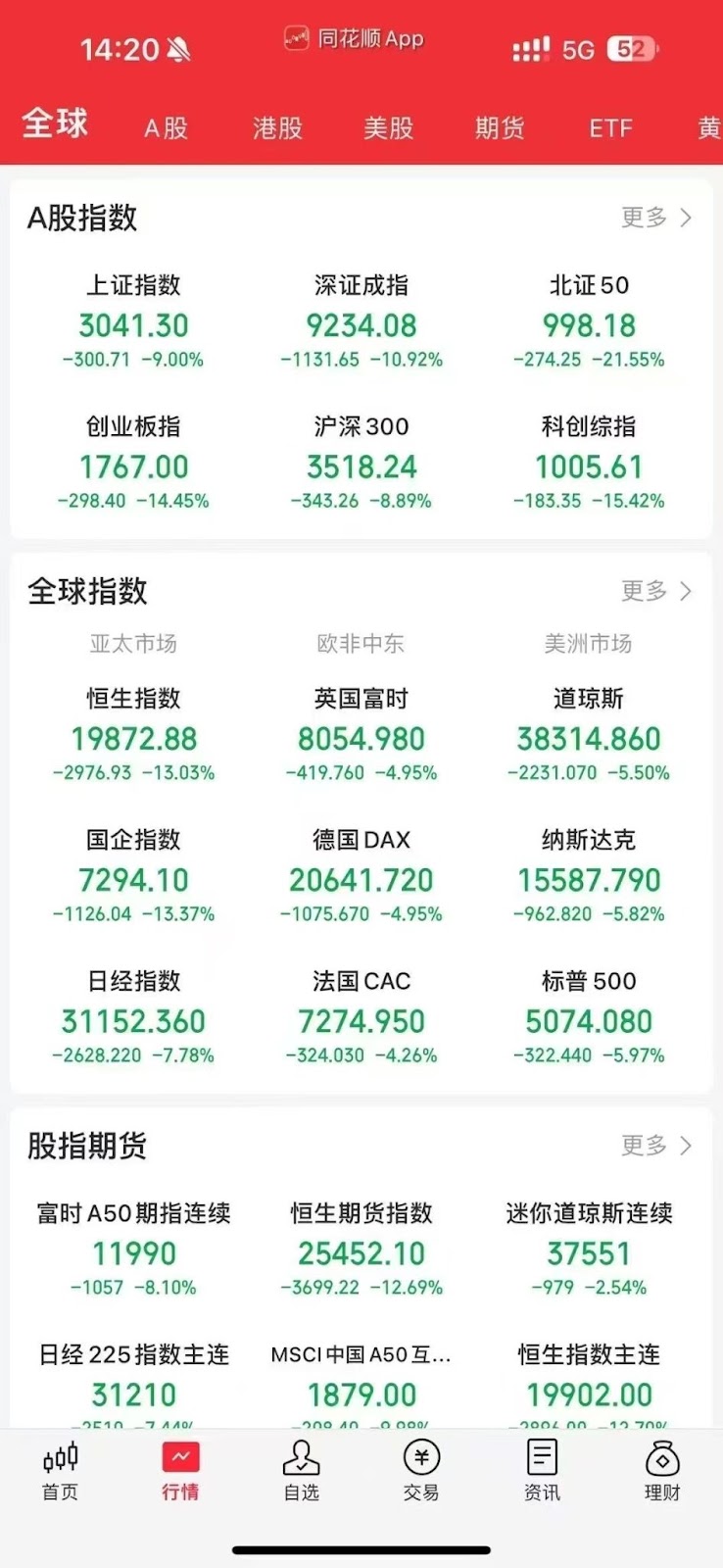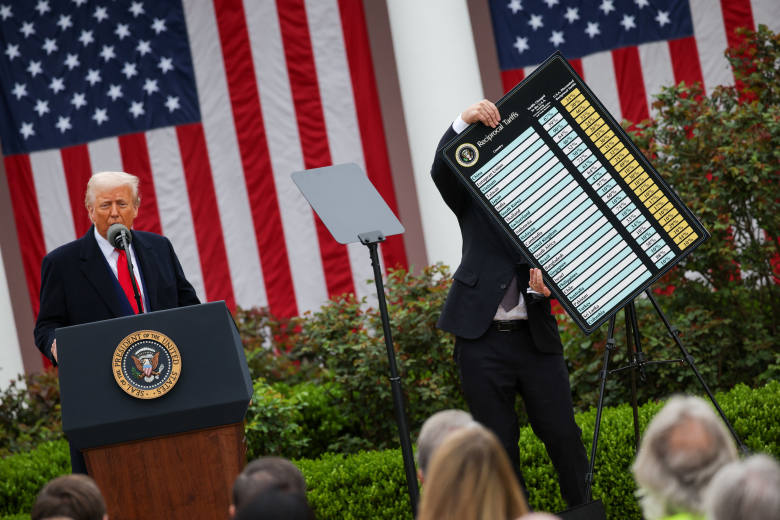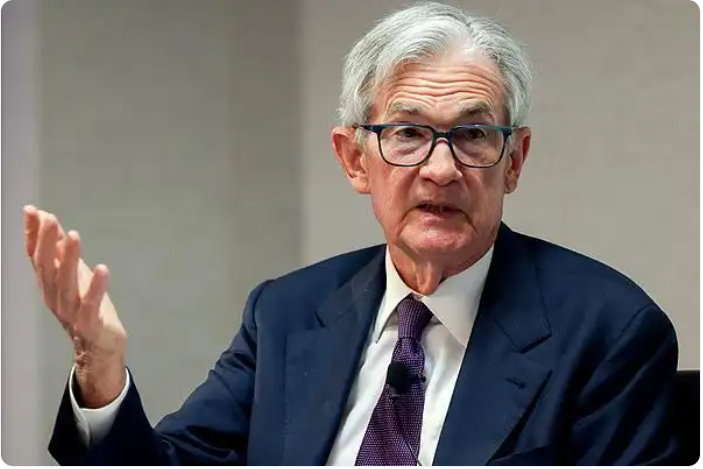Currently, the global capital markets are experiencing severe turbulence triggered by the tariff policy initiated by U.S. President Donald Trump. On April 7, 2025, the cryptocurrency market suffered a major setback, with Bitcoin prices dropping to as low as $74,500 and Ethereum falling to $1,411. This not only reflects the profound impact of external economic factors on this emerging asset domain but also caught many investors off guard who previously believed in Bitcoin's hedging capabilities during global crises.

Simultaneously, global stock markets reacted equally dramatically, with Japanese and Korean stock markets triggering circuit breakers, the U.S. stock market plummeting for three consecutive days, and European and A-share markets also suffering significant losses, with over 3,000 stocks hitting their daily limit, revealing the market's panic.
The root of all this points to the tariff policy announced by Trump in April 2025, which includes imposing at least a 10% tariff on all imported goods and higher tax rates on countries with significant trade deficits, such as a tariff of up to 54% on China. However, what is the fundamental cause of this turbulence - Trump's personal decision or deeper economic and political logic? How does this cryptocurrency market crash differ from the market collapse triggered by the Luna incident in 2022? After experiencing a decline lasting over two months, can the cryptocurrency market still see a rebound in the second quarter or second half of 2025?
With these questions in mind, this article will delve into the motivations behind Trump's tariff policy and its impact on global markets and the cryptocurrency ecosystem.
The Motivation Behind Trump's Tariff Policy: Protectionism or a More Complex Chessboard?
To understand why Trump is pushing such an aggressive tariff policy, we need to examine it within the current economic and political context of the United States.

According to the White House's official statement, this tariff measure aims to protect U.S. manufacturing, reduce the long-standing trade deficits, and address a series of national security threats, such as drug smuggling and illegal immigration.
This logic is not a completely new policy approach but continues the "America First" ideology from Trump's first term between 2016 and 2020, when he imposed high tariffs on imported steel and aluminum and added a 25% tariff on Chinese goods, which had previously caused global market tremors.
However, the 2025 tariff policy significantly upgrades in both breadth and intensity, not only covering all imported goods but also imposing higher punitive tariffs on specific countries, an approach that surprised many economists and market observers and sparked widespread speculation about Trump's true motives.
On the surface, Trump's tariff policy seems to fulfill his promises to American workers and manufacturing by increasing the cost of imported goods to stimulate domestic production and reduce dependence on foreign goods. However, economists have warned that these protectionist measures might backfire, leading to increased import costs, rising consumer prices, and ultimately higher inflation rates, potentially even triggering a global trade war.
For instance, a U.S. Chamber of Commerce study estimates that if tariffs are fully implemented, the average annual expenditure for U.S. consumers will increase by about $2,000, which would undoubtedly be a heavy burden for low and middle-income families still recovering from the pandemic. Moreover, Trump has linked tariffs to national security, claiming that high tariffs can curb drug smuggling and illegal immigration, but this assertion is highly controversial in academic and policy analysis circles due to the complexity of supply chains and the interdependence of the global economy.
However, whether Trump's decision is entirely based on personal will or driven by deeper factors is worth further investigation.
Some analysts suggest that the 2025 tariff policy may not be solely an economic consideration but is closely related to the domestic political situation in the United States. After successfully winning re-election in 2024, Trump faces a divided Congress and increasingly intense partisan conflicts. He needs to consolidate his political base through tough economic policies and prove to his supporters his ability to fulfill campaign promises. Additionally, the dramatic changes in the global geopolitical landscape - such as the intensified competition between the U.S. and China in technology and energy sectors, and the energy crisis caused by the Russia-Ukraine conflict - might have prompted Trump to use tariffs as a tool to reshape the U.S.'s international position. White House Chief Strategist Peter Navarro optimistically stated in a FOX NEWS interview that "you won't lose money if you don't sell stocks, and the stock market will see its greatest prosperity under Trump's policy," a statement that sharply contrasts with market realities but also reflects the Trump team's strategy of trying to counter market panic by shaping confidence.
In summary, Trump's tariff policy is both a continuation of domestic economic protectionism and part of a geopolitical chess game. Its motivations are far from simple trade protection and represent a complex political and economic maneuver.
Global Market's Violent Reaction: From Stock Market Circuit Breakers to Increased Economic Uncertainty
As soon as Trump's tariff policy was announced, the global capital markets' reaction could be described as "swift and intense". On April 7, 2025, Japanese and Korean stock markets triggered circuit breakers due to excessive declines. The S&P 500 index lost $2.4 trillion in market value on the first trading day after the tariff announcement, creating the largest single-day drop since the COVID-19 pandemic in 2020. European and A-share markets were similarly affected, with over 3,000 stocks hitting their daily limit, reminiscent of the shadows of past global financial crises for many investors.
This market volatility not only reflects investors' concerns about the direct consequences of the tariff policy - such as supply chain disruptions and increased corporate costs - but also highlights deeper fears about the escalating global economic uncertainty.
Economists generally warn that Trump's tariff policy could bring multiple negative effects. First, high tariffs will drive up imported goods prices, leading to increased inflation pressure in the U.S., which is particularly sensitive given the Federal Reserve's recent recovery from the high-interest-rate cycle of 2022-2023. Secondly, other countries might take retaliatory measures, such as China potentially imposing tariffs on U.S. agricultural and technology products, and the EU possibly reinstating trade barriers on U.S. automobiles and consumer goods, creating a vicious cycle that further weakens the stability of the global trade system. A recent TD Securities report indicates that the deterioration of trade tensions might force the Federal Reserve to cut rates earlier, with analysts predicting that the 10-year U.S. Treasury yield could drop to 3% by the end of 2025, and the first Fed rate cut might be moved forward from July to June, with continued rate cuts until May 2026. This prediction is echoed by institutions like Goldman Sachs and UBS Global Wealth Management, with swap traders even anticipating more than four rate cuts by year-end, significantly higher than the three expected before the tariff policy announcement.
For ordinary investors and families, this uncertainty brings not just on-paper losses but deep worries about the future.
A Wall Street trader wrote on social media: "I haven't slept well for three consecutive days. Clients keep asking me what will happen next, but I don't know the answer either."
This sentiment is spreading globally, especially in countries highly dependent on exports, such as South Korea and Germany, where stock market crashes directly reflect market panic over supply chain disruptions and demand contraction. It can be foreseen that if trade tensions continue to escalate, the global economy may face more severe challenges than expected, and the possibility of a US economic recession—currently assessed at 50% by analysts—will become the focus of market attention in the coming months.
Cryptocurrency Market Crash: External Shocks vs. the 2022 Luna Event
Synchronized with global stock market volatility, the cryptocurrency market experienced its most severe single-day decline since the 2022 Luna event on April 7, 2025, with Bitcoin dropping to as low as $74,500 and Ethereum falling to $1,411. This downturn has lasted for over two months, leaving many investors who previously proclaimed "Bitcoin as a safe-haven asset" silent.
Compared to the market crash in 2022, this cryptocurrency market crash presents entirely different characteristics, revealing the evolution of the cryptocurrency ecosystem and providing important clues to understanding its future trajectory.
1. Trigger Mechanism: External Shocks vs. Endogenous Risks
- 2022 Luna Crisis: The de-pegging of algorithmic stablecoin UST directly triggered an on-chain liquidation death spiral, essentially a resonance of internal system design flaws (over-reliance on arbitrage mechanisms) and leverage bubbles ($24 billion locked in Anchor Protocol's 20% yield).
- 2025 Tariff Impact: The decline in crypto assets is a result of systemic risk transmission. The synchronized crash of global stocks (Nikkei 225 circuit breaker), commodities (WTI crude oil dropping below $60), and cryptocurrencies reflects market panic about "stagflation"—tariffs driving up production costs (US Manufacturing PMI plummeting to 47.3) while suppressing consumer demand (global trade volume expected to shrink by 8%), forcing investors to sell risk assets for liquidity.
2. Generational Differences in Market Structure
- Participant Transition: In 2022, the crypto market was still dominated by retail investors and hedge funds, whereas by 2025, institutional holdings exceed 60% (BlackRock, Fidelity ETF management reaching $100 billion). This makes market volatility more susceptible to macroeconomic policy influences (such as Fed rate cut expectations triggering futures contract liquidations).
- Strengthened Asset Correlation: Bitcoin's 30-day correlation with the S&P 500 index has risen from 0.3 in 2022 to 0.7 in 2025, indicating deep integration into the traditional financial system and loss of independence.
This amplification effect of external shocks has prompted a re-examination of whether cryptocurrencies can truly remain unscathed during global crises.
However, despite external factors being the primary cause of this crash, certain weaknesses within the cryptocurrency market have also been exposed.
Taking Ethereum as an example, its Layer 2 (L2) ecosystem's rapid development should have brought higher scalability and application scenarios, but many L2 projects have not paid sufficient fees to the mainnet or participated in ETH buyback and burn, leading to continuous pressure on Ethereum's supply-demand model. Multiple projects, including Metis, have provided feedback to the Ethereum Foundation, hoping to move beyond the "social experiment" positioning towards a more sustainable economic model, but the decentralized governance structure makes such adjustments extremely slow.
In the Bitcoin ecosystem, the BTCFi (Bitcoin Financialization) project wave has also exposed issues. For instance, Babylon, while capturing the opportunity of native asset reuse, has raised investor doubts about its sustainability due to its economic model and excessive market expectations.The accumulation of these internal problems makes the cryptocurrency market more vulnerable when facing external shocks.
The Future of the Cryptocurrency Market: Will 2025 See a Rebound?
After more than two months of decline, cryptocurrency market investors and practitioners are anxiously seeking an answer: Can the market emerge from its low point and regain an upward trend in the second quarter or second half of 2025? To answer this, we need to comprehensively consider global economic trends, monetary policy adjustments, and the cryptocurrency industry's self-repair capabilities, a process both hopeful and uncertain.
From an external environment perspective, the cryptocurrency market's rebound largely depends on the easing of trade tensions and the Federal Reserve's policy direction. If Trump's tariff policies trigger a comprehensive trade war in the coming months, leading to a global economic recession, cryptocurrencies as high-risk assets may continue to be under pressure.
However, if trade negotiations make progress, such as a compromise between the US and China or US and EU, market confidence may gradually recover, providing rebound momentum for risk assets including cryptocurrencies.Additionally, the Federal Reserve's monetary policy will be a key variable.

TD Securities predicts that the Federal Reserve may start rate cuts in June 2025 and continue to ease until May 2026, an expectation already reflected in swap market pricing for more than four rate cuts by year-end. Rate cuts typically reduce the US dollar's attractiveness and boost stock and cryptocurrency prices, especially if economic data in the third or fourth quarter shows reduced recession risks.
From an industry perspective, the cryptocurrency market's recovery also requires addressing its structural issues. For Ethereum, if the L2 ecosystem can find a sustainable profit model and support mainnet security, such as through a tax mechanism supporting ETH burn, its price may gradually stabilize. The Bitcoin BTCFi track needs a breakthrough solution similar to Ethereum's Optimistic Rollup to reduce development costs and improve economic model feasibility. As one practitioner said, "BTCFi is now like Layer 2 before OP's birth. Only when a mature solution is found and costs decrease can it be widely adopted." If these innovations can be implemented in the first half of 2025, the cryptocurrency market might seize a rebound window when the external environment improves.
Based on the above analysis, the possibility of market recovery and upward trend in the second quarter or second half of 2025 exists but is not without risks. If trade tensions ease and the Federal Reserve cuts rates as expected, Bitcoin and Ethereum might regain momentum in the third quarter, even challenging previous highs. However, if the global economy further deteriorates and the US recession probability rises above the current 50%, cryptocurrency recovery might be delayed until 2026. For investors, this uncertainty is both a challenge and an opportunity.
A long-term Bitcoin community member reflected, "I've seen the 2018 bear market and survived the 2022 crash. This time is difficult, but I believe the market will always find a way out." This resilience may be the unique charm of the cryptocurrency ecosystem.
Conclusion: Reflection and Hope in Turbulence
Trump's tariff policy, like a sudden storm, has swept through global capital markets and subjected the cryptocurrency market to its most severe test since the 2022 Luna event.
Unlike the internal crisis back then, this crash is more driven by external economic factors, reflecting the increasing correlation between cryptocurrencies and traditional markets, and prompting a re-examination of the limitations of its safe-haven attributes.
However, as history has proven many times, every crisis is a test of market resilience and innovation capabilities. Regardless of whether Trump's motives stem from protectionism or more complex geopolitical considerations, the chain reactions triggered by his policies have left a profound mark globally. For cryptocurrency investors and practitioners, the future path is destined to be full of twists and turns, but potential easing of trade tensions and monetary policy adjustments may bring opportunities in the second half of 2025. In this process, maintaining caution, paying attention to economic data and policy dynamics, and maintaining confidence in industry improvements may be the best strategy for dealing with this turbulence. After all, in the ups and downs of the market, human hope and perseverance remain the warmest underlying tone.








